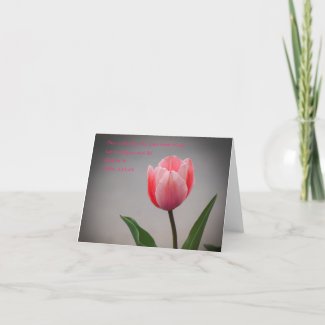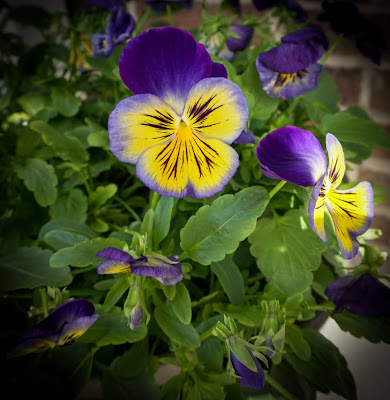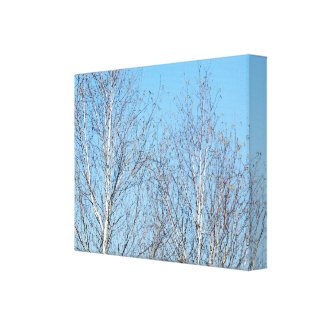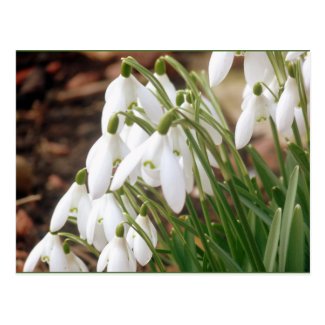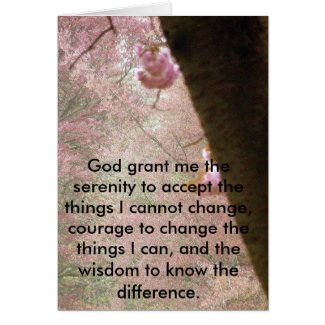 |
| Spring Trees and Bushes |
Thursday, April 22, 2021
Spring in Full Bloom
Friday, April 9, 2021
Bush Trimming Cleanup is Easier with Disposable Drop Cloths Reviewed
Trimming my Juniper bushes is the first thing I do in my backyard in early spring and it is the last thing I do before winter. Thanks to my small, yet sharp, Black & Decker Hedge Trimmer, the trimming part is easy. However, the cleanup used to be back-breaking and take hours. I dreaded the job as the work days approached. So many times I had to tell myself just get out there and get it done! Then one year I had an epiphany that made that job so much easier and faster.
I started laying out disposable drop clothes under the bushes. That way, as I trim, all of the debris and clippings fall directly on the drop cloth. When I am finished, I simply roll up the drop cloths and throw them away.
Now, instead of taking 2 or 3 days, wearing myself out and having to take Advil for my back pain, I can finish the entire job in about 4 hours.
Over the last few years, I have found that the lighter weight drop cloths are not a good choice. They tear, which defeats the purpose of using them.
The plastic drop cloths I prefer are heavy duty, 1 MIL, 9" x 12". Since I only use them one time and throw them away, this size and thickness are very easy to handle without being too thin to handle the weight of bush trimming.
I buy them in packages of 2 or 3. I use 3 drop cloths to surround the large bushes I have to trim and I lay them all out before I start trimming. That way, I don't end up trimming in an area of the bush that doesn't have the plastic underneath it to catch the clippings.
When I have finished trimming the entire bush, I fold the length side of each plastic drop cloth over the middle, covering all of the trimmings. Then, starting at one end, roll it up, put it in a big durable Contractor's trash bag, and throw it away.
Buying plastic drop cloths is a very inexpensive way to make a hard job much easier. Plus, I can enjoy my freshly trimmed bushes a lot sooner and call it a job well done.
Frost King P115R/3 Clear Polyethylene Drop Cloths (3 Pack), 9' x 12' x 1MilCheck Price Contractor's Choice 50-Count 42-Gallon Outdoor Construction Trash BagsCheck Price BLACK+DECKER Electric Hedge Trimmer, 17-Inch (BEHT150)Check Price SLARMOR Long-Gardening-Gloves Women/Men-Thorn Proof Rose Pruning Heavy Duty Gauntlet-SCheck Price
Read More Gardening Reviews On
ReviewThisGardening.com
Monday, April 5, 2021
Spring Woodland Walks For Wellbeing Reviewed

|
| Woodland Walks |
Nature and wildlife are a huge part of my life in so many ways. They are an integral part of my life, my soul even. They are essential to my wellbeing.
I had not been able to go for a woodland walk in a long time due to the Covid lockdowns in our country and having to stay local for walks.
I really missed our woodland walks and the absence of them made me realise how much I need to be connected to nature for my wellbeing.
I love gardening and have done a lot of that this year but I know I also need the wildness of a forest. So today I would like to take you with me on our woodland walks and to discuss why connecting with nature and especially woodlands is so important.

|
| Bluebells In Spring Woodland Clearing |
Walking In Woodland
The obvious benefit to walking in woodland is the exercise. If you are on a treadmill or exercise bike I tend to notice how long I have been exercising. However, in a woodland walk, I can roam for hours up and down hills across streams and I really do not notice that I have in fact been exercising for maybe 2 hours.
In addition, you receive fresh air enhanced by the gorgeous trees and shrubs all around you and the experience being outdoors in a different environment.
Also, I always find woodland to be so calming. Studies have shown that exercising in woodland decreases stress and anxiety.
There is always something new to see in a woodland from frosty winter trees against a blue sky, haunting misty scenes, to new buds and spring flowers.
We share the woods with many animals and birds and so far we have seen rabbits, squirrels, mice and many species of birds. In fact, it has made me want to learn more about bird songs as I can often hear the birds singing but cannot see them.
Most of all I always feel tired yet refreshed after a woodland walk. There is something about the energy of the tall trees, the green environment, renewal and being surrounded by wild nature that makes the heart sing and sets me up for the rest of the day.
I have never felt afraid in a forest, it is all rather comforting and familiar to me. I like to feel small against the huge trees that are protecting, rather than intimidating.
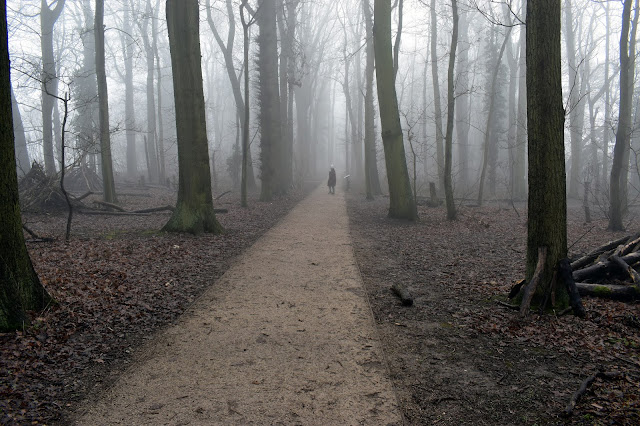
|
| A Misty Woodland Walk In Early Spring |
Tree Bark In Woodland
I love to look out for beautiful bark patterns on the trees. The bark is never just brown, it has amazing patterns and colours, shallow and deep rivulets.
If you look closely you may see a tiny creature or two going about its day. An ancient tree has lived so many years, seen so much and overcome drought with heat and damaging storms.
An ancient tree can give us hope and peace that we too can overcome many things. While our lifespan is not so long as many trees, we can experience and overcome so much, flourish and grow.

|
| Beautiful Tree Bark |
Fallen Trees In A Woodland
I love to see the fallen trees gradually becoming a habitat for new life. The natural life of a tree is usually a long one. Trees seed, grow into young saplings, mature and live long productive lives.
Then if trees are managed well they are either allowed to fall when old or felled if they become in danger of falling to cause damage or injury.
Importantly if they are allowed to rest rather than cleared away, there is a further opportunity in death for them to still live on providing sustenance and homes for all manner of bugs, insects and mammals.
Their bark eventually decays and enriches the soil and from that springs more new life and so the cycle of nature goes on just as it should.

|
| Fallen Trees Giving New Life |
Stunning Snowdrops
As winter turns to Spring I eagerly look out for the stunning Snowdrop. I do not have a favourite flower rather I like to embrace each flower on its own merits and the snowdrop is a perfect example of a flower that has its moment in time.
Snowdrops look so delicate, so tiny yet they are strong and tough little flowers that survive and thrive at one of the harshest times of the year
I adore the white purity of the flower against the shining green stems and am always amazed how such a tiny flower braves snow and ice, winds and wet and comes through it all defying the harsh conditions to bloom so brightly, so splendidly.
To me, they are a symbol of Hope that the winter is behind us and the warmer, sunnier lighter days are just around the corner. We also look forward to bluebells, crocus and the wonderful fungi that appear in the forest.
Woodland Birds
Birds fascinate me more than most animals in the woodland. I am mesmerized by their singing, the clever way they build their nests and care for their young and the beauty of their feathers.
I love to look out for blackbirds, sparrows, blue tits and woodpeckers. It is a lovely way to spend a morning to find a place to sit and listen to this sound which is as beautiful as the most accomplished orchestra.
In one of the forests we visit, the local Wildlife Trust has set up birdfeeder stations. If you are quiet and still and patient there is nothing better than watching the birds dart onto and off the feeders. Sometimes I take photos, other times I simply experience the moment, in a state of just being.
I was so lucky we were in the right place at the right time and actually looking upwards to the tops of the trees, to get the opportunity to take this photograph of a cormorant perching high to dry his wing feathers after diving.
Cormorants are distinctive birds that often live in the woodland but nearby water and there is a large pond in the middle of this forest that is perfect for this bird to fish in. They have as you can see a long neck and an almost prehistoric appearance about them. After fishing, it needs to find a high perch in the open where it can hold its wings out so they can dry after each dive. I feel so privileged to have observed this moment in nature.
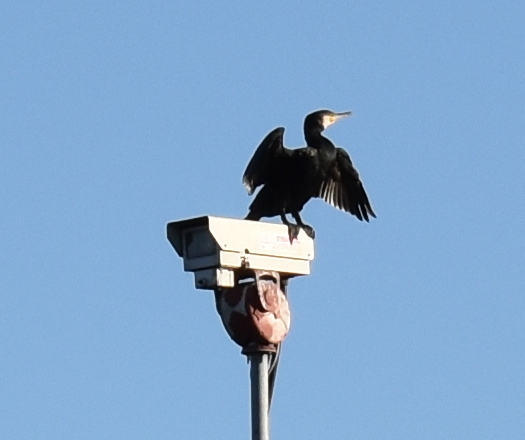
|
| Cormorant Drying Wings After Diving |
Spring In The Woods, Nurturing The Soul
As we approach Spring, the clocks go forward, we have longer hours of daylight and suddenly the forest changes occur very quickly.
The tiny tight buds we saw in early spring now unfurl at a rapid pace and the previously brown bare branches almost overnight turn into bright fresh green foliage. This is my favorite time right now.
Everything is fresh and new and bright, the days are longer and there is the promise of much more to come. Any worries we have seem more bearable in this beautiful magical environment. I feel a fresh resurgence of the desire to do things, to grow, to explore.
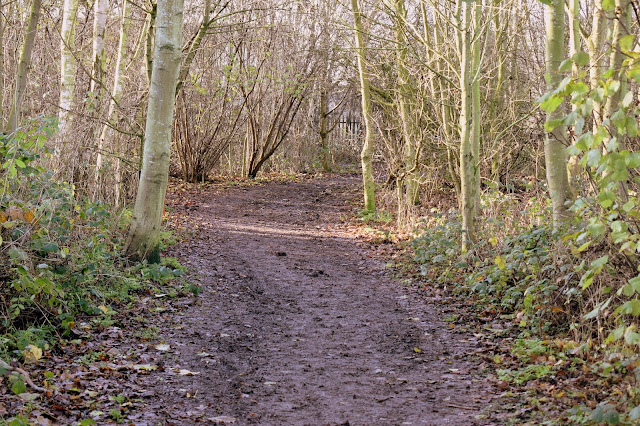
|
| Early Spring In The Woods |
It is far too easy these days to become caught up in the everyday noise of our lives, the television, the news, the traffic to see what is occurring right with us if we take time to really look and listen.
There is nothing quite like a forest to see that renewal to view the changes in nature, to feel the growth of new life, to smell the damp soil underfoot and to hear the beautiful birdsong. To experience the sheer joy of finding a new flower that was not there the day before.
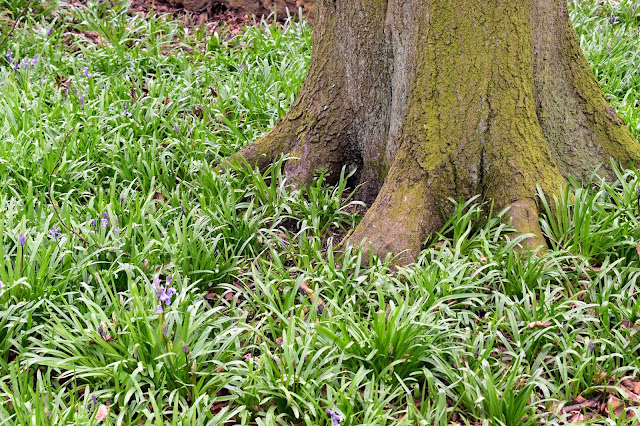
|
| Beautiful Bluebells! |
I love this poem by WH Davies which encourages us to "stand and stare" in nature for our own good.
What Is Life If Full Of Care...?
What is this life if, full of care,
We have no time to stand and stare.
No time to stand beneath the boughs
And stare as long as sheep or cows.
No time to see, when woods we pass,
Where squirrels hide their nuts in grass.
No time to see, in broad daylight,
Streams full of stars, like skies at night.
No time to turn at Beauty's glance,
And watch her feet, how they can dance.
No time to wait till her mouth can
Enrich that smile her eyes began.
A poor life this if, full of care,
We have no time to stand and stare.
by W.H. Davies
Woodland Walking And Wellbeing
I gave some thought to what word I feel when walking in the woods and I have concluded that the word is "Serenity".
That is the feeling and that is perhaps why so many studies are now showing that it is vital for us all to spend more time in a natural environment.
Even if that is only one walk a week it gives us benefits but if we can make it thirty minutes a day it is beneficial to our overall health and certainly to our mental and emotional wellbeing.
Life can be quite challenging at times and we all have things we need to deal with, perhaps more so these days, so we need a place to go to ground ourselves, to find peace, to find that serenity.
If you, like me love to connect with nature and the countryside and have a love for trees and woodlands and have enjoyed this glimpse into my woodland walks, you may enjoy reading this book Wildwood by the late Roger Deakin. He was a British nature writer and takes us on a journey through the mysteries of woods, trees and nature in several countries around the world. His writing is quite beautiful and uplifting when looking into the spirituality of nature and people's connection with the natural world.
So for me walking in woodland is not only an enjoyable activity I always look forward to whatever the weather and a way to connect with nature, but it is also an essential part of ensuring my health and wellbeing. I hope you have enjoyed this walk through the woods with me.
More Nature Articles
Six Ways To Help Wildlife In The Year Ahead
5 Wildlife Gift Ideas Reviewed
Spring Into The Garden Give Nature A Helping Hand A Garden Review
Joy Of The First Snowdrops Diary Of A Wild Country Garden
Sunday, March 21, 2021
Growing Vegetables In Outdoor Containers Reviewed.
Can You Grow Vegetables If You Only Have A Patio Or Balcony?
Many people would like to grow vegetables but either do not have a garden at all or just a small garden. I do not have a huge garden, it is not small but not really big enough for me to grow all the lovely decorative plants I like to grow and also everything I like to have for nature and grow vegetables. Really I need acres!
For the past few years, I have become increasingly interested in growing vegetables and so three years ago we started. As there is no space left in the garden, it had to all be in pots.
The first year we only decided to grow veg in March and so had to get on with it really quickly as many seeds need to be sown in March or April. So I did not have time to do research or much reading before I started planting.
In some ways, this was a good thing as I did not get a chance to be worried about it though I could have done with some basic advice. However, to my amazement, most of the crops were a success!

|
| Beautiful Home Grown Beans |
Is It Possible To Grow Vegetables In Outdoor Containers?
Last year I grew the same vegetables and improved upon my skill after reading some good books which helped me to understand vegetable growing in containers and what I was doing.
This year I have just started growing my container vegetable garden again and even branched out to some other seeds to try.
I think you just have to give it a go and see what happens. After all, plants always want to grow. If we give them the right conditions they will do their best to grow as big and strong as they can.
This book "Grow All You Can Eat in 3 Square Feet" is one I used to get me going with vegetable growing. It covers how to grow a range of vegetables in a limited space in pots, windowboxes, various containers and how to organise raised beds. I found it easy to navigate and I liked the pictures to give me inspiration. A decent book especially if you are new to vegetable container gardening.
You may have a small garden, or it might already be filled with your decorative plants and flowers and you do not wish to turn over a section to vegetable growing. Or maybe you do not have a garden but perhaps you have a balcony or a courtyard or even space outside your door. Even people who have large gardens may not have soil conditions suitable for all vegetable growing. So yes I would say it is possible to grow veg in pots with just a few conditions.
Below are a few tips and suggestions from my own experience for starting to grow vegetables and salads in a container garden.
Tips For Growing Vegetables In Containers Outdoors
1. It is advisable to use good quality compost to fill your containers. I try to always get a high-quality peat-free garden compost that is a good all-rounder. If you can't get compost each year you can use garden soil but this depends on your garden soil, of course, if you have a garden. Ours is heavy claggy clay and while strong plants do very well in it, seeds always suffer and rarely germinate well.
So I have to buy good vegetable growing compost and this year I have also bought specific seed compost for starting off the seeds that I will then transplant into bigger pots. You will need to feed your veg throughout the year as well. I find a tomato feed or vegetable feed liquid is good.
2. For vegetables that are remaining where they are sown choose the largest containers you can. This makes sowing easier and you will not have to water quite so much. Soil always dries out quicker in a container.
I do start off many of my bigger vegetables in small pots first then transplant them to the large pots. However, the smaller the pot the more watering you will need to do.
Containers of metal while they look great will heat up too much and your veg will suffer. If possible try not to have black containers which will also heat up more quickly.
However, I do have black plastic containers which are Ok if I shade them with other plants or keep them in semi-shade. Choose containers of clay or plastic and if terracotta do line with a plastic bag or old compost bag and make drainage holes, to help prevent it drying out so fast.
You can theoretically use any container for veg growing and I have been known to use large yogurt pots and even old washing up bowls with drainage holes punched through!
There are containers to avoid though and that is any that have ever held any poison or chemicals and avoid old tyres which may leach chemicals to your veg. You do not want to be eating any form of chemical!
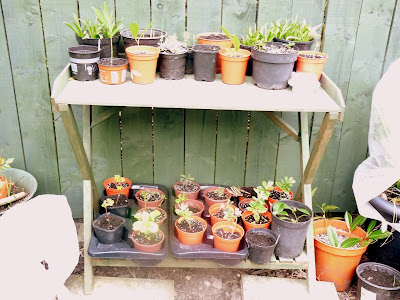
|
| Vegetables And Flowers Started Off In Small Pots |
3. Get a watering can with a rose attachment or a hosepipe with a gentle spray or mist setting for watering the young plants and seeds. You do not want to wash away seeds or destroy young seedlings with a harsh blast of water.
4. Always water the compost first then sow the seeds. This means for the initial stages you will not wash away the seeds into a clump while watering. Then read the instructions carefully, some seeds require a light covering of compost or vermiculite, others need light to germinate and should not be covered.
5. Try to place your pots in the best position for the specific seeds - for most vegetables they need a sunny spot but for some they will cope well or need semi-shade. The huge advantage of pots is that they can be moved if needed.
6. When you have sown your seeds do label the containers with the name of the seeds and the date! I forgot to do this with many of the pots in the first year and I thought I would remember what I had sown in each pot, but how wrong I was!
7. Put a few sticks in the compost to dissuade the neighbourhood cats, local foxes, or other wildlife from using your nice soft compost as a toilet until the plants grow up.
8. Do not have a monoculture of vegetables. Either place your containers amongst other plants that are in the ground or pot up some flowering plants, wildflowers and herbs and place them in amongst the vegetables. That way not only will you attract more beneficial pollinators to help but will also attract predators to deal with any pests that will lay eggs or eat your vegetables.
The carrot fly for example is attracted by the scent of the carrot so if we plant other strong scents nearby like mint or chives, it confuses the carrot fly who cannot find the carrots! I do not use any pesticides or chemicals at all in our garden and that goes for the vegetables as well. So it is important to me to work with nature on this and attract all the wildlife I possibly can into our garden. Yes, I do lose some vegetables to pests but I gain so much more in terms of healthy food and beneficial wildlife.

|
| Flowers Planted Near Container Vegetable Garden |
Which Vegetables Can We Grow In Outdoor Containers?
It is always best if you simply grow what you love to eat! You can try anything given a big enough pot. However, some crops like asparagus take a long time to reach maturity and are not so suitable for growing in pots.
Crops like squashes generally take up a lot of space and need more than most containers, though it might be possible with a small variety if you really wanted to try. Especially if you are starting out it is advisable to stick with easier growing varieties. Success breeds success and as we get more confident we can try more difficult veg.
You can try anything you like. Here are just a few suggestions from my own experience. Probably the easiest crops to grow in containers outside are the Salad Varieties then vegetables like Beetroot, Rocket, Radish, Broad beans, Baby Carrots, Potatoes and Runner Beans. You can easily buy a wide variety of seeds online.
1. Rocket is very quick and easy to grow and I have had success growing it in a wide variety of containers. Sow a little every week for a good supply.
2. Onions-I buy setting onions rather than seeds as they are so much easier. I simply place them in the container at the required distance and depth.
3.Potatoes in a bag. This is my most successful way of growing potatoes. I choose potatoes that say they do well in containers. It is important to exclude light from the developing tubers so I simply use 2 compost bags turned inside out and punch drainage holes in the bottom and sides with scissors/ Then a layer of compost and put 2 maybe 3 potatoes in then cover deeply with more compost as they grow. Simply empty the bag out for harvesting. So much easier than digging in heavy soil!
4.Radish is very easy to grow and does well in pretty much any container. Sow a few, then do succession sowing every couple of weeks for a crop all summer.

|
| Beautiful Home Grown Radish |
5. Carrots but I would advise you to use a tall container and also try a baby carrot variety so they do not need the depth that a garden soil can provide.
I do find carrots take up a container for a long time and are small so sometimes wonder if they are worth it but they are my fave vegetable so deserve a place here.
They are a vegetable I would always struggle to grow in my heavy soil anyway as soon as they hit a block they will fork and grow distorted so a container or raised bed will always be the way I will grow carrots. Do be aware that carrots must not dry out as again they will grow distorted. One big advantage of growing in a container is that you can easily protect it from carrot fly by placing it high up or by covering it with a light layer of fleece.
6.Leafy salads from lettuce to oriental mixes and mustards I grow in shallow containers as they are generally a quick-growing crop. I also sow them in between other vegetables like the slower-growing onions.
7.Runner Beans usually require a really big deep pot and supporting canes. I make the canes out of our Cornus or thinner tree branch cuttings.
8.Broad beans are easy to grow and need well-drained soil and if a taller variety, will need staking. Smaller varieties may not need much support.
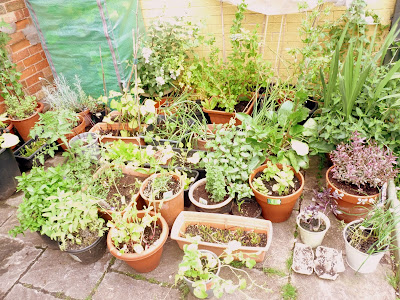
|
| Our Container Vegetable Garden! |
So if you do not have a garden and need or want to grow vegetables do gather together some containers and give it a go! You may have some failures, but you will have many successes.
There is nothing like eating vegetables and salads you have grown from seed and nurtured. You have just picked it and minutes later it is on your plate. You know absolutely what is in it and that it is free from chemicals and has not traveled miles to reach you.
In my opinion, homegrown vegetables always taste better than anything you buy, they are fun to grow and you will feel so proud of yourself. So garden or no garden, in my experience you certainly can grow your own vegetables as a container garden.
More Gardening Articles
Monday, March 15, 2021
Book Review: The First-Time Gardener Growing Vegetables
Perhaps you want to grow your own food but are afraid and have no clue where to begin. Or maybe you can relate to me, having had some experience and success growing literally a couple of vegetables over the decades but far more familiar with wasted time, money, and failed gardening attempts. If you would like to grow your own vegetable garden with confidence, The First Time Gardener Growing Vegetables: All the Know-How and Encouragement You need to Grow and Fall in Love with Your Brand New Food Garden by Jessica Sowards is an excellent investment.
 |
| The First Time Gardener - Growing Vegetables |
With the purchase of my land, construction of my home, and dreams of having a successful vegetable garden, I am familiar with Jessica Sowards of Roots and Refuge Farm fame through her youtube channel. I spend nearly all of my indoor free time watching videos about gardening and homesteading and her channel has been one that I have learned a good deal from. Her love of gardening is contagious and she is a wealth of vegetable knowledge. When she announced that she had written a book I knew I had to buy it.
The First Time Gardener Growing Vegetables: All the Know-How and Encouragement You need to Grow and Fall in Love with Your Brand New Food Garden
This 176 page book is written by Jessica Sowards with photographs by Makenzie Evans Photography. It is part gardening guide, part inspirational prose, and part coffee table visual feast. This book is not an in-depth, encyclopedia of plant names, varieties, and specific growing details of each plant. It is summarized bits of encouraging information.
The Chapters include:
- Welcome to the Classroom
- The Foundation - What Every Gardener Needs to Succeed
- Creating Your Garden
- Growing with the Seasons
- The Needs for Seed... or Not
- Grow Something Lovely - Designing a Captivating Space
- The Nitty-Gritty of Garden Management
- Making the Harvest
- Conclusion - Grow on, Gardener
 |
| aka "fertilizers" - I've only recently learned about coconut coir |
 |
| a list of some of the best food plants for container gardening |
More About Why I Chose This Book
I currently live in a metro area apartment. I have successfully grown some tomatoes (and a small handful of tiny potatoes) on my south-facing balcony. But I haven't tried to grow a garden in the ground for some years (oh my gosh, decades! My how time flies!). With my planned move to four acres, I am dreaming of having a garden with a variety of vegetables that I will be able to eat fresh or can for later. While I am excited about my plans, I am also afraid.
I am afraid of more plant failure. Over my lifetime, I have made many attempts to grow plants: houseplants, vegetables, berries, fruit trees... and I have failed massively. I have wasted so much time, energy, and money only to end up with seedlings that die, plants purchased from a store that I kill, and a variety of plants that never grow anything edible.
I am also overwhelmed by feeling as though there is so much information to remember; when to plant, what to use for fertilizer, when to harvest, and so on. While everything is available on the internet, I want to make sure to have some good reference books in my home. I do not have reliable connectivity on top of the mountain ridge. There will be many times that I will not be able to look up things on the internet. Also, with this book it will be quicker to flip open to a list or a quick reminder.
Last year I impulsively bought a couple of zucchini and cabbage starts from a roadside stand and planted them in my flower garden. Even though I only sporadically visited my land and did not provide care for those plants, several zucchini grew and I was able to make my own zucchini bread. With a little guidance and support from Jessica's book I should be able to have even more success this coming year.
Related Links:
Make sure you check out the Review This! Gardening tab to see the other posts by our contributors. Our group includes some very talented gardeners. Click this link or the gardening tab at the top of this page and scroll down to see previous gardening posts.
To read more about my land and future homestead please visit my personal blog or take a peek at the video of my house under construction. But be advised, I am not a "youtuber". But with a peek at the videos or blog post it will be easy to see why I will do much of my gardening in containers or raised beds. And that I will need all of the guidance I can get.
I mentioned Jessica's youtube channel. If you love to watch gardening videos and/or someone who finds quiet joy in gardening, be sure to check out Roots and Refuge.
To see what others are saying about The First Time Gardener Growing Vegetables: All the Know-How and Encouragement You need to Grow and Fall in Love with Your Brand New Food Garden be sure to check out the reviews on Amazon.
Most Recent Reviews on Review This Reviews
Search for Reviews by Subject, Author or Title
The Review This Reviews Contributors
 Sylvestermouse
Sylvestermouse Dawn Rae B
Dawn Rae B MbgPhoto
MbgPhoto Brite-Ideas
Brite-Ideas Wednesday Elf
Wednesday Elf Olivia Morris
Olivia Morris Treasures by Brenda
Treasures by Brenda The Savvy Age
The Savvy Age Margaret Schindel
Margaret Schindel Raintree Annie
Raintree Annie Lou16
Lou16 Sam Monaco
Sam Monaco
 Cheryl Paton
Cheryl Paton Renaissance Woman
Renaissance Woman BarbRad
BarbRad Bev Owens
Bev Owens BuckHawk
BuckHawk Decorating for Events
Decorating for Events Heather426
Heather426 Coletta Teske
Coletta Teske MissMerFaery
MissMerFaery Mickie_G
Mickie_G
Review This Reviews is Dedicated to the Memory of Our Beloved Friend and Fellow Contributor
We may be apart, but
You Are Not Forgotten








